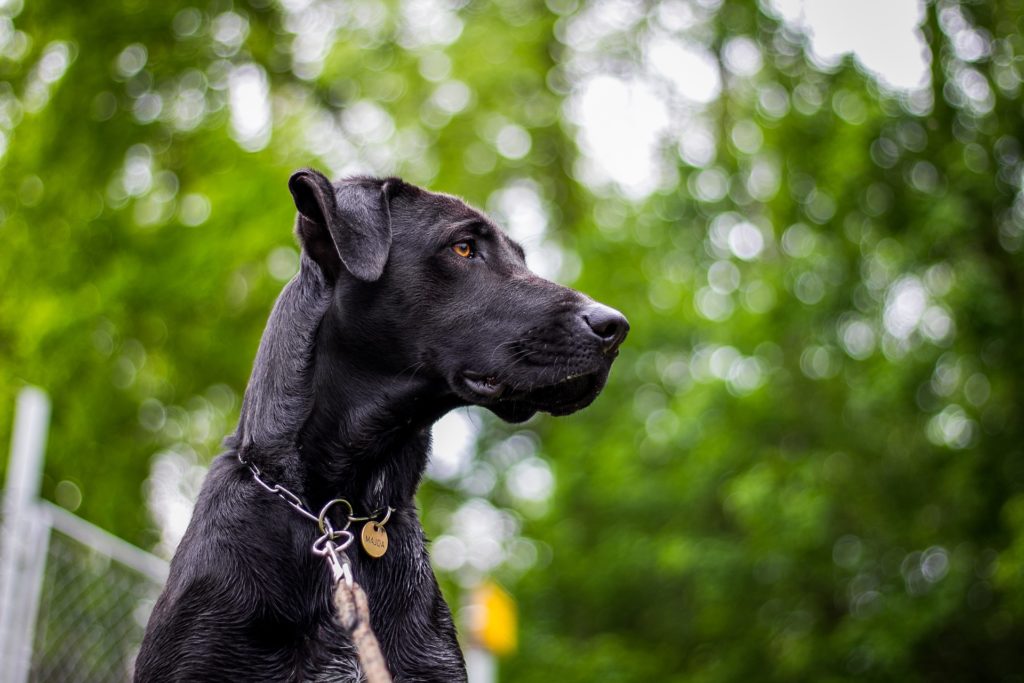In today’s world and economy, it seems like every time you turn around, someone you know is dealing with the symptoms of allergies related to something. It could be environmental or seasonal allergies, or it could be related to food. Especially with all the “stuff” found in foods these days.
But did you know that dogs are much like people, and they too can develop allergies? In fact, food allergies are a very common ailment in dogs because of the way commercial dog foods are made. With many brands of commercial dog food, the goal is quantity over quality, despite any claims to the contrary.
Unfortunately, (especially when it comes to feeding your dog commercial brands of dog foods) a food allergy can be difficult to narrow down. This makes finding the offending agent in your dog’s diet and removing it a bit of a treasure hunt. Often, there may be more than one offending agent, which only makes things even more difficult.
No matter which way you look at it, trying to figure out the source of a dog’s food allergy can be a challenge, so this is a helpful guide intended to steer you in the right direction. Hopefully, it will aid you on your quest to bring relief to your four-legged family member.
What is a Food Allergy?
A food allergy is when your dog’s body and immune system responds negatively to proteins (and possibly other chemicals and additives) that are often added to commercial grade dog foods to make them more attractive and “healthy” to consumers.
These additives are placed in both wet and dry foods, so no matter which version you get, your dog could still develop an allergy to it. Many of the ingredients in commercial foods that dogs develop an allergy to sound innocuous enough, but in fact, they can cause a great deal of havoc.

Some of the most inflammatory ingredients include:
- Corn
- Dairy products
- Wheat
- Soy
- Fish
- Eggs
Food allergies in dogs can run the gamut from a very mild case to a severe case that makes your dog utterly miserable. A food allergy can come on suddenly or establish itself gradually over time, especially if you feed your dog the same thing day in and day out. Regardless of how severe the case may be, no dog is a happy camper when suffering from the symptoms related to food allergies, even if the case is mild.
What Kind of Dog Can Develop Food Allergies?
The short answer is that any dog can develop a food allergy. It doesn’t matter the breed, it doesn’t matter whether they are male or female, it doesn’t matter whether they are spayed, neutered… no dog can escape the potential they possess to develop a food allergy. There are too many things added to a typical diet in today’s economy that a body (human or canine) simply isn’t meant to process.
Dogs can suffer from food allergies even when they are pups, and they can develop a food allergy well into their golden years. Oftentimes, dogs that already have some sort of pre-existing allergic condition are more susceptible to developing a food allergy than dogs that have no pre-existing allergic conditions. Because their immune system is already compromised and over-reactive, it makes the development of allergies to other triggers that much easier.
Symptoms of Food Allergies in Dogs
Symptoms of food allergies in dogs can mimic symptoms of other conditions, so it may be a little difficult to get to the bottom of your dog’s angst at first. Sometimes a dog can experience symptoms that appear random, but aren’t. They may be related to a food allergy.
Some of the more common symptoms of food allergies in dogs include:
- Obsessive licking
- Obsessive chewing and biting
- Itching
- Biting their paws
- Chronic ear infections and inflammation
- A poor-looking coat
Dogs can also experience symptoms that mimic the same type of reactions humans may get with a food allergy, such as:
- Hives
- Skin rashes
- Itching
- Nausea
- Vomiting
- Chronic or explosive diarrhea
- An itchy bottom
- Gas
If it’s a severe allergic reaction, your dog may experience swelling of the airways, difficulty breathing, and a rapid heart rate. A dog with a very severe allergic reaction to a food ingredient like this could be going into anaphylactic shock.
In this case, the situation becomes an emergency and you need take your dog to see your vet immediately. A dog suffering from anaphylactic shock can be fatal if not treated quickly.
Food Allergy? Or Just Intolerance?
There is a difference between a food allergy and a food intolerance. They are two distinct disorders, and they produce distinct reactions. Food allergies involve your dog’s immune system.
However, a food intolerance is largely a problem of the gastrointestinal system. A dog with a food intolerance may suffer from things like nausea, diarrhea, and other symptoms related to an upset tummy. These symptoms are digestive issues, not immune system issues.
Another difference with a food intolerance versus an allergy is that a food intolerance is short-lived and resolves once the offending agent passes through the gastrointestinal system. A food allergy on the other hand, will trigger symptoms constantly and your dog may not respond to any of the treatments administered by your vet.

How Do You Know It’s a Food Allergy?
It can be difficult to pin down a cause when it comes to any type of allergy in dogs. There is a myriad of other health conditions that can trigger symptoms that resemble food allergy symptoms, so to make an accurate diagnosis, those other health conditions must first be ruled out.
Sometimes dogs are allergic to flea bites and other parasites, and sometimes they suffer from bacterial or yeast infections. Sometimes dogs develop atopic dermatitis or conditions like demodectic mange.
All these health conditions can trigger symptoms like itching, hair loss, skin irritations, redness and swelling, and even those maddening hotspots on dogs. These all mimic the signs of an allergic response. So, it is important to first eliminate other potential causes of your dog’s symptoms before you can begin tackling their diet and narrowing down possible food offenders.
In most cases, if your vet suspects a food allergy they may recommend an elimination diet, or possibly a food trial. With a food trial, your vet will advise you to feed your dog a new type of dog food made up of specific carbs and proteins for a period of three months.
For instance, you might give your dog a food that is made up of only beef and potatoes, or only lamb and rice. During the trial, it’s important not to feed your dog anything but the chosen dog food. This includes giving them medications, chews, or treats. Only give them the chosen dog food and water.
You also will need to monitor your dog when they go outside, because if they eat anything from outdoors, the food trial must be ended and you and your vet will still not have any of the answers you seek. You’ll have to begin again.
The purpose of a food trial is to narrow down the potential ingredients in your dog’s commercial dog food that may be causing them grief. If you find that it’s an additive or protein in your current brand of dog food that is the problem, you will need to find another source of food that is free of the offending additive or protein (a challenge at times), or you will need to feed your dog a homemade diet instead.
Most Common Ingredients that Trigger Food Allergy Symptoms
Remember that a food allergy is your dog’s negative immune response to certain proteins and additives found in commercial brands of dog food.

Some of the most common allergy-triggering ingredients are:
- Pork
- Chicken
- Beef
- Fish
- Milk
- Whey
- Soy
- Eggs
- Wheat
- Corn
- Preservatives
Unfortunately, most commercial brands of dog food have at least one of these potential offenders, and often they will have more than one. This makes finding a good brand of food a challenge, and it is why it can be difficult to determine exactly what is causing your dog’s symptoms.
There are some specialized commercial dog food brands that claim they are formulated to be “hypoallergenic” that may be a viable option. Sometimes they are truthful. However, not all of them are honest in their claims, so you must be careful. Some companies are just out to increase their bottom line.
Depending on how sensitive your dog is to some of these allergens, your vet may recommend a homemade diet of real and raw foods instead, to achieve the best results in healing your dog.
With a homemade diet, you can start with one or two protein and carb staples, then slowly add in different proteins and carbs if you see that your dog tolerates them with no adverse symptoms.
Other Sources of Food Allergens
Sometimes dogs experience an allergic reaction to food additives that have nothing to do with their normal dog food, but perhaps originate from some treat or chew toy you have given them.
Even dog treats labeled “allergen free,” often are made with chicken meal or chicken fat and can cause a reaction. So be very careful of the treats that you give your dog, and try withholding them for a time to determine if they could be the source of your dog’s current woes.
How Do You Prevent Food Allergies in Dogs?
It’s not always possible to prevent a food allergy from developing in your dog, however, it doesn’t mean you can’t try. You can start by making sure you are feeding your dog the best diet you can, one that is balanced and appropriate for their species. Raw food is an excellent place to start.
When feeding your dog a raw diet, some grains and carbohydrates are important, but you should still limit or reduce them and focus on giving them quality protein. Make sure that whatever you feed your dog, you are rotating their protein sources on a regular basis, because feeding your dog too much of one food source for an extended period can open them up to a food sensitivity.
Plus, rotating foods helps give your dog a wider variety of nutrition. One of the best ways to rotate is to just choose a single protein to feed your dog for a few months, and then rotate that out for a new single protein for another few months.
That way, if your dog does develop an allergy to one of the sources, it is much easier to pinpoint. Another excellent way to help keep your dog healthy and prevent allergies is to make sure you are giving them a quality probiotic to help keep their gut flora healthy. Many diseases start first in the gut, so pay attention to keeping your dog’s gastrointestinal system in tip top shape, and you can ward off potential food sensitivities before they start.
It’s never fun for a dog to suffer the symptoms associated with allergies, especially food allergies. They can be so difficult and frustrating to narrow down. However, with scrutiny of your dog’s diet and some tweaks to what you feed him, there is hope.
In many cases, your dog’s allergy symptoms can be alleviated or even eradicated entirely, and your dog will no longer have to suffer.
Yes, it can be aggravating and even baffling at times as you attempt to play detective, but just remember it’s no picnic for your dog either. Be determined to get to the root cause of your dog’s allergy, and be committed to eliminating the problem if you can. The result will be improved quality of life for your canine friend. Who can argue with that?




